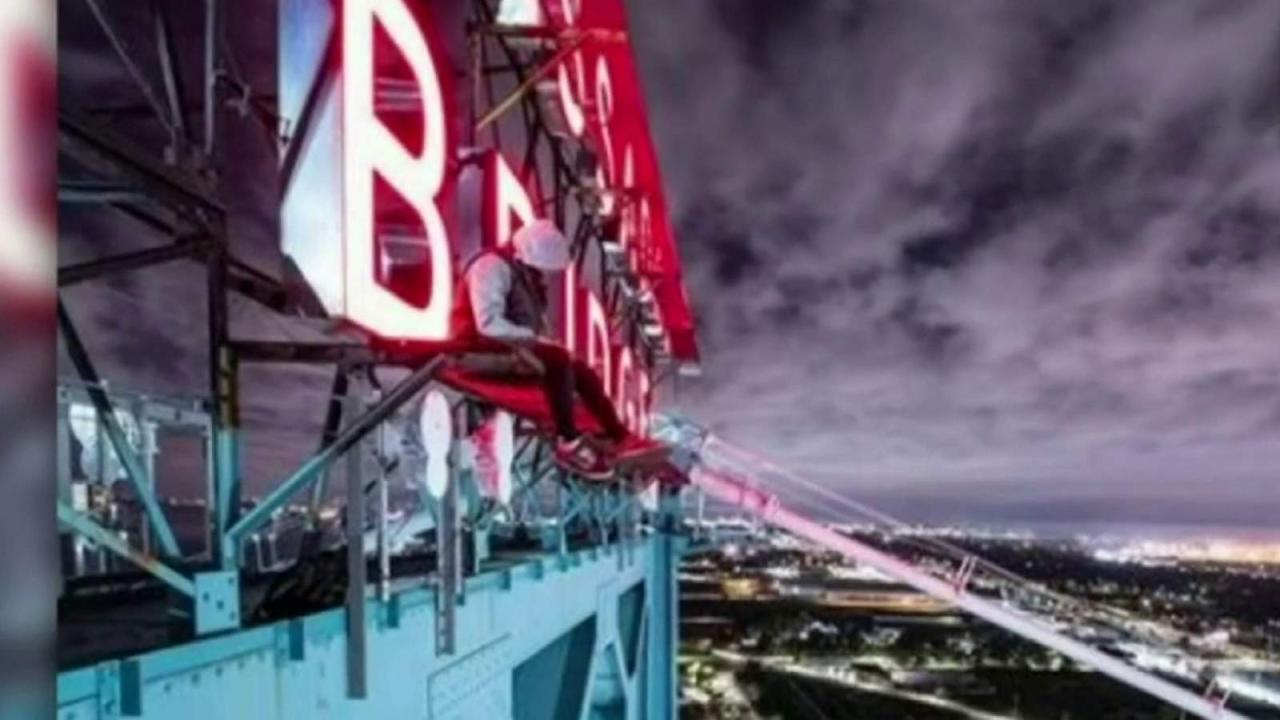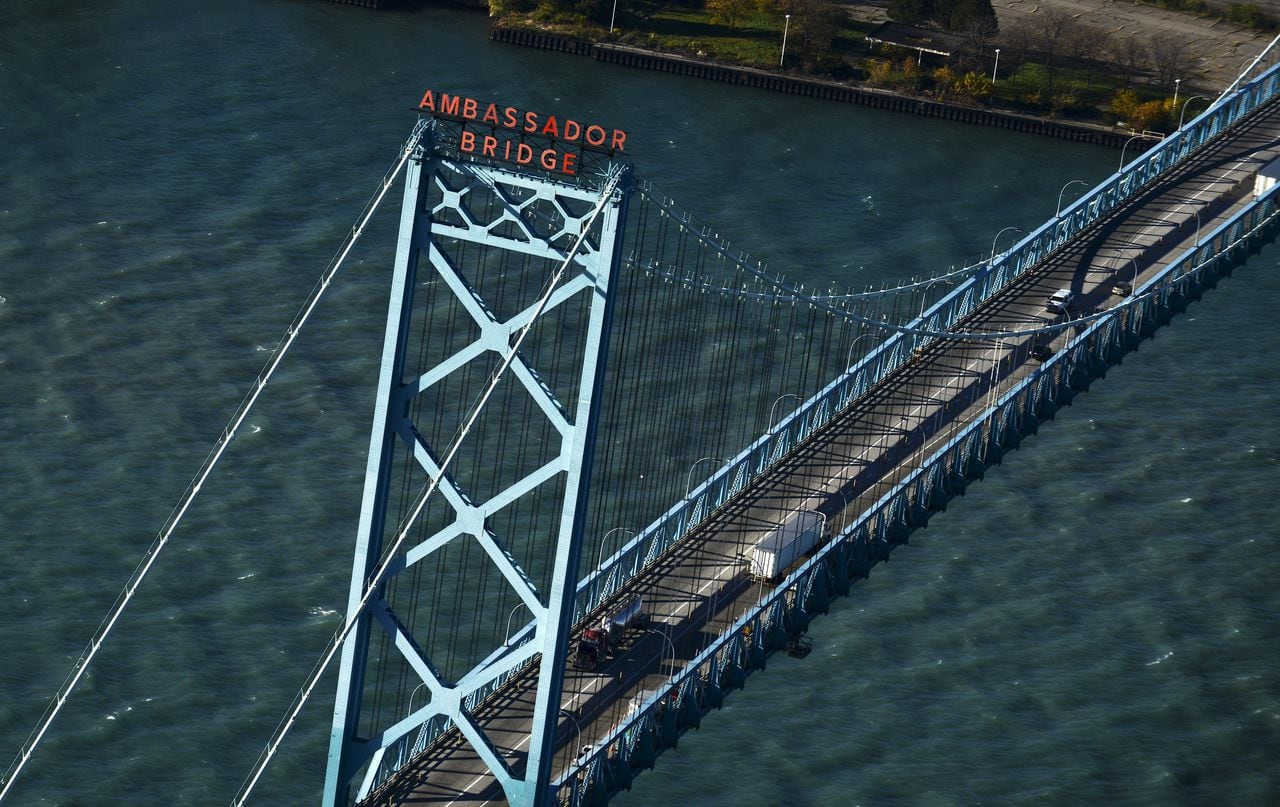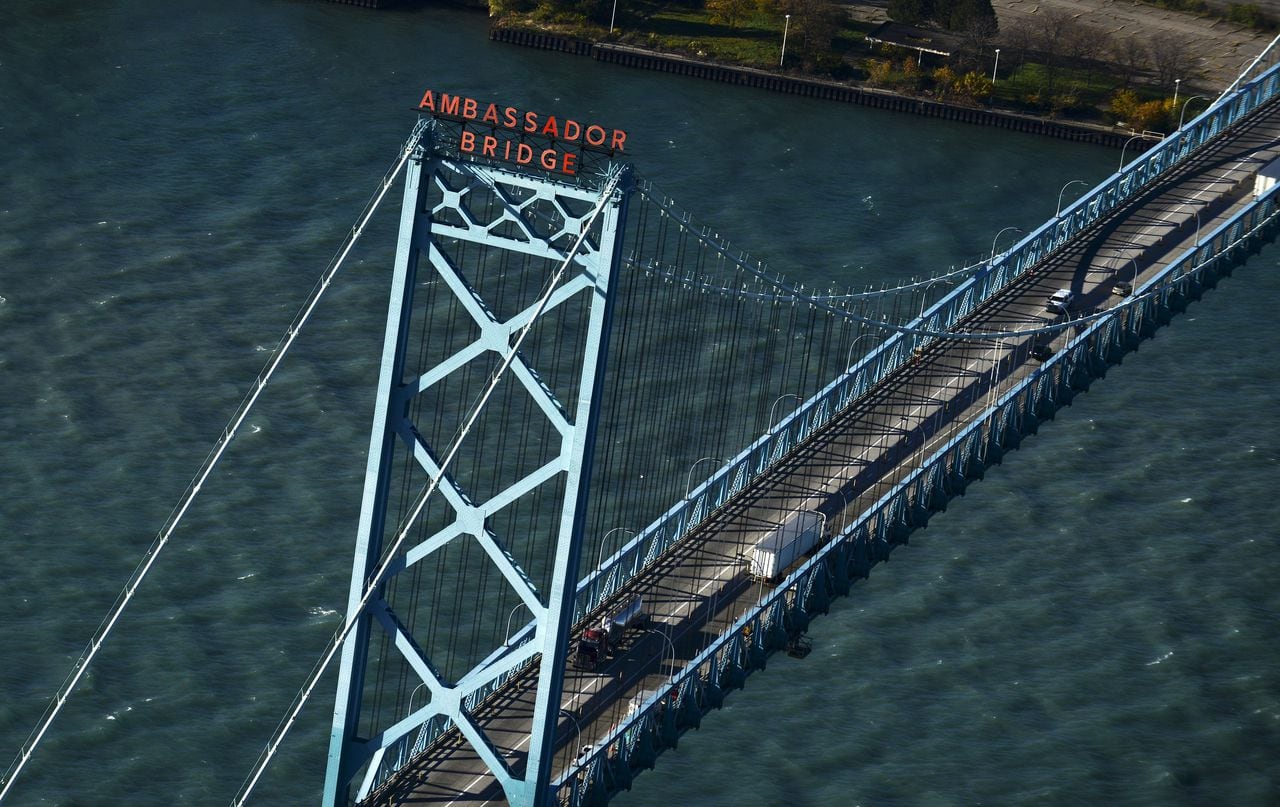Ambassador Bridge camera photography offers unique challenges and rewards. This guide explores optimal viewpoints, lighting conditions, and compositional techniques for capturing compelling images of this iconic structure. We analyze the bridge’s appearance from both the Detroit and Windsor perspectives, detailing how time of day, weather, and lens choice impact the final image. Technical aspects, including camera settings and equipment recommendations, are also addressed, alongside illustrative examples of various photographic styles.
The analysis encompasses sunrise, midday, sunset, and nighttime photography, highlighting the distinct lighting characteristics and associated photographic challenges and solutions for each period. Furthermore, the guide delves into advanced compositional strategies, such as leading lines and the rule of thirds, to enhance the visual impact of the photographs. Finally, a detailed examination of post-processing techniques and their influence on the final aesthetic is included.
Ambassador Bridge Views & Perspectives

The Ambassador Bridge, a majestic suspension bridge connecting Detroit, Michigan, and Windsor, Ontario, offers a diverse range of photographic opportunities depending on location, time of day, and weather conditions. The bridge’s imposing structure and its reflection in the Detroit River create visually compelling scenes, varying significantly based on the chosen perspective.
Optimal Vantage Points and Conditions
The selection of a vantage point significantly influences the resulting photograph. The optimal time of day and weather conditions for capturing specific moods are directly related to lighting and atmospheric effects. Sunrise and sunset offer the most dramatic lighting, casting long shadows and creating a warm, golden hue. Overcast days, while lacking the intensity of direct sunlight, provide even illumination, minimizing harsh shadows and revealing finer details of the bridge’s architecture.
Clear days allow for expansive views, showcasing the bridge against the backdrop of the cityscapes of Detroit and Windsor. Fog can create a mysterious and atmospheric effect, while stormy weather adds a sense of drama and power.
Comparative Views from Detroit and Windsor
The architectural features of the Ambassador Bridge are differently emphasized depending on the viewing location. From the Detroit side, the bridge’s imposing towers and the extensive cable system are prominent, with the Detroit skyline providing a dynamic urban backdrop. The approach to the bridge from the Detroit side offers a longer perspective, allowing for a more comprehensive view of the bridge’s length and its relationship to the surrounding environment.
In contrast, the Windsor side provides a closer, more intimate view, emphasizing the bridge’s connection to the Canadian cityscape. The perspective from Windsor often highlights the bridge’s graceful curves and its integration with the Windsor waterfront.
Location-Specific Photography Guide
The following table summarizes optimal photographic conditions and notable features visible from various locations:
| Location | Best Time of Day | Recommended Lens | Notable Features Visible |
|---|---|---|---|
| Detroit Riverwalk (Detroit side) | Sunrise/Sunset | Wide-angle to mid-range (24-70mm) | Full bridge length, Detroit skyline, river reflections |
| Belle Isle (Detroit side) | Golden hour (sunrise/sunset) or overcast day | Telephoto (70-200mm or longer) | Detailed bridge structure, cable system, Detroit skyline in the distance |
| Windsor Riverfront (Windsor side) | Sunrise/Sunset | Mid-range to telephoto (35-135mm) | Bridge’s curves, Windsor skyline, closer view of bridge structure |
| Ojibway Park (Windsor side) | Overcast day or soft light | Wide-angle (16-35mm) | Bridge in context of natural landscape, potential for creative compositions |
Array
The Ambassador Bridge, with its imposing Art Deco design and strategic location, offers a wealth of photographic opportunities. The bridge’s aesthetic qualities, combined with the dynamic interplay of light and weather, allow for a diverse range of photographic styles and interpretations. This section will explore three distinct styles—minimalist, dramatic, and vibrant—demonstrating how different techniques and environmental conditions can be harnessed to capture compelling images.
The impact of varying weather conditions on the bridge’s visual presentation and photographic potential will also be addressed.
Minimalist Photography of the Ambassador Bridge, Ambassador bridge camera
A minimalist approach prioritizes simplicity and clean lines. To achieve this with the Ambassador Bridge, a photographer might choose a long telephoto lens to isolate a section of the bridge against a largely uncluttered sky. The lighting should be even and diffused, avoiding harsh shadows that could detract from the minimalist aesthetic. Post-processing would focus on subtle adjustments to contrast and saturation, maintaining a muted color palette.
For example, a photograph might focus solely on a portion of the bridge’s suspension cables, emphasizing their geometric patterns against a pale sky, creating a sense of serene order and architectural precision. The absence of distracting elements enhances the viewer’s focus on the bridge’s inherent form and structure.
Dramatic Photography of the Ambassador Bridge
Dramatic photography aims to evoke a sense of power and intensity. This can be achieved by photographing the bridge during a dramatic sunset or sunrise, using a wide-angle lens to capture the bridge in its entirety against a fiery sky. Strong backlighting can create silhouettes, emphasizing the bridge’s imposing scale. Post-processing could involve increasing contrast and saturation to enhance the vibrancy of the colors, creating a more impactful image.
A storm brewing in the background, with dark clouds and dramatic lighting, would further enhance the dramatic effect. The interplay of light and shadow, coupled with the imposing structure of the bridge, would produce a powerful and memorable image.
Vibrant Photography of the Ambassador Bridge
Vibrant photography aims to capture the bridge’s lively energy and visual richness. This style benefits from shooting on a bright, sunny day with clear skies. A wide-angle or slightly telephoto lens can capture the bridge’s full expanse, while also including some of the surrounding cityscape. The goal is to capture the vibrant colors of the bridge itself, as well as the surrounding environment.
Post-processing might involve enhancing saturation and vibrancy, ensuring that the colors are bold and striking. For instance, a photograph might capture the bridge on a day with brilliant blue skies and bright sunlight, showcasing the bridge’s metallic surfaces reflecting the light and the lively colors of the surrounding city.
Influence of Weather Conditions on Ambassador Bridge Photography
Different weather conditions significantly alter the bridge’s photographic potential. Fog can create a mysterious and ethereal atmosphere, softening the bridge’s hard lines and adding depth to the image. Snow can transform the bridge into a stark, winter wonderland, providing a contrasting backdrop of white against the bridge’s dark steel. Clear skies offer opportunities for vibrant and brightly lit images, showcasing the bridge’s details and architectural features.
Each condition presents unique photographic challenges and opportunities, requiring adjustments in exposure, composition, and post-processing techniques to achieve the desired effect.
Key Elements of a Compelling Ambassador Bridge Photograph
The following elements contribute to a photograph’s success:
- Lighting: The interplay of light and shadow significantly impacts the mood and visual impact. Golden hour lighting (sunrise and sunset) often produces the most dramatic results.
- Composition: Strategic framing and use of leading lines can guide the viewer’s eye and create a visually appealing image. The rule of thirds is a useful compositional guideline.
- Perspective: Varying viewpoints (ground level, elevated, across the river) can dramatically change the bridge’s appearance and the overall composition.
- Subject Matter: Incorporating elements beyond the bridge, such as the cityscape or the river, can add context and visual interest.
- Post-Processing: Careful adjustments to contrast, saturation, and sharpness can significantly enhance the final image.
Mastering Ambassador Bridge camera photography requires a nuanced understanding of light, composition, and technical skills. This guide provides a framework for capturing stunning images, encompassing diverse perspectives, times of day, and weather conditions. By employing the techniques and strategies Artikeld, photographers can elevate their work, producing captivating images that truly capture the essence of this architectural marvel. The interplay of technical expertise and artistic vision is crucial in transforming a simple photograph into a powerful visual statement.
Detailed FAQs: Ambassador Bridge Camera
What type of tripod is best for Ambassador Bridge photography?
A sturdy tripod with a ball head is recommended to ensure stability, especially in low-light conditions or when using longer lenses.
What are some essential post-processing techniques for Ambassador Bridge photos?
Essential techniques include adjusting exposure, contrast, and white balance; selectively enhancing details; and potentially using HDR techniques to manage high dynamic range scenarios.
Are there any restrictions on photography near the Ambassador Bridge?
Check local regulations and be mindful of security considerations. Avoid areas that might be restricted for safety or security reasons.
What are the best apps for editing Ambassador Bridge photos?
Adobe Lightroom and Photoshop are industry standards, but many other applications offer comparable functionality, including mobile options like Snapseed and Lightroom Mobile.
High-resolution cameras monitoring the Ambassador Bridge provide crucial data for traffic flow analysis and infrastructure assessment. The scale of such monitoring could be enhanced by integrating data from alternative sources, such as the advanced imaging capabilities offered by a giant drone , which could provide broader contextual information. This combined data set would allow for more comprehensive analysis of bridge operations and potential maintenance needs.
The Ambassador Bridge camera system provides a crucial surveillance function, monitoring vehicular and pedestrian traffic. Increased drone activity necessitates enhanced security measures, as evidenced by the global increase in unauthorized drone flights detailed in this report on drone sightings around the world. Therefore, the integration of drone detection capabilities into the Ambassador Bridge camera network would improve overall security and situational awareness.
